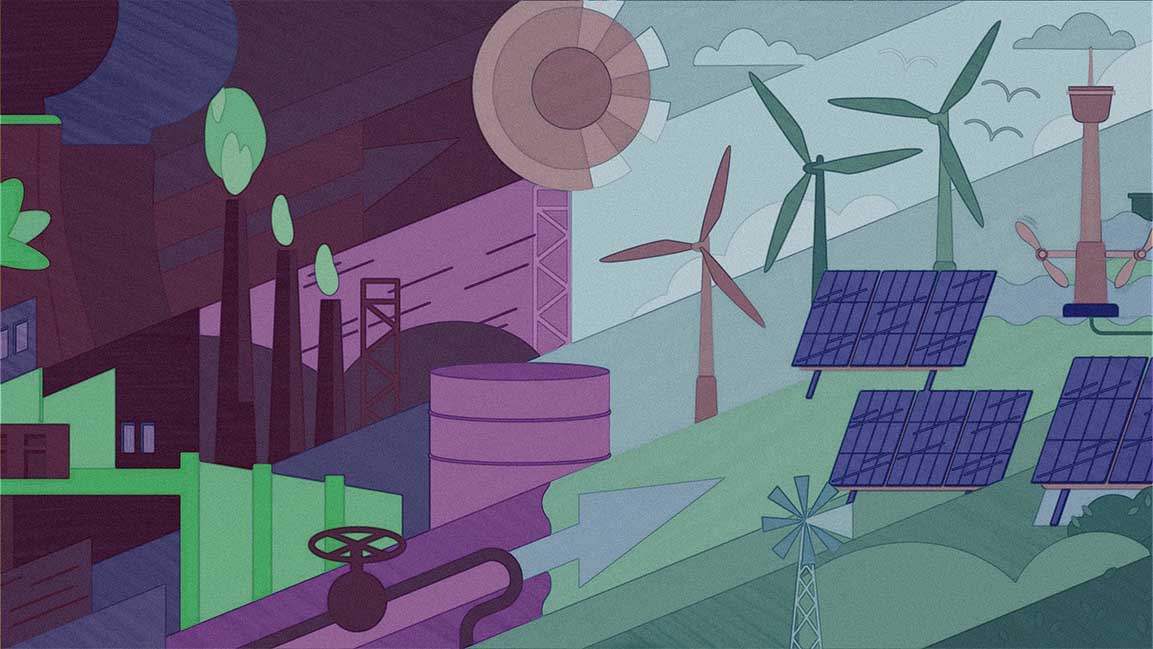- | BCG
What will it take to achieve an energy transition in the Middle East?
Close collaboration among key stakeholders is crucial as the region navigates its transition to a sustainable future.

As the world navigates the transition to low-carbon energy, the Middle East region is doing its part to navigate the shift towards cleaner energy sources.
According to the International Renewable Energy Agency (IRENA), renewable energy capacity in the Middle East increased significantly by 12.8% in 2022 compared to the previous year. Key players in the region, including Iran, the UAE, and Jordan, achieved record levels of green energy production during that year. Additionally, Qatar, Oman, and Lebanon surpassed their cumulative renewable capacity installations of the past decade by connecting more renewable energy capacity in 2022.
Government-led initiatives and the implementation of new renewable energy projects in neighboring countries within the region are playing a crucial role in establishing a significant momentum for energy transition.
It’s imperative that all relevant stakeholders – from governments to the private sector and investors – must collaborate, an analysis called A Just Energy Transition Takes An Ecosystem from BCG pointed out. At the same time, the report also suggested an array of issues that should be addressed.
KEY ISSUES ON THE ROAD TO A JUST ENERGY TRANSITION
A key obstacle is driving equitable employment. While the transition to net zero has the potential to bring 30 million clean energy-related jobs by 2030, it may also cause the loss of more than five million jobs in fossil fuel industries. Newly created clean energy jobs will call for new skill sets and specializations, measures, and policies will be required to mitigate the impact on people’s livelihoods.
Support would be needed, especially for at-risk communities and nations impacted by rising energy costs and job losses. In 2021, the World Bank forecasted that climate change will push up to 130 million people into poverty over the next ten years. Whilst Africa has contributed the least to cumulative global CO2 emissions, it will be impacted by floods, storms, and droughts brought on by climate change. Rising energy costs and job losses will further burden vulnerable countries.
There also needs to be a strategic plan to address inequities in financing. Data shows that nations have deployed only 16% of the $3.8 trillion that experts say is required annually for mitigation and adaptation, and only 30% of climate funding has gone to emerging and developing markets. Governments and companies must increase funding and direct investments.
Securing a sustainable clean energy supply is also a factor in successful clean energy transitions, noted the report. With higher energy prices, businesses and policymakers transitioning to net zero are responsible for ensuring vulnerable populations get access as well.
And, of course, to achieve net zero, phasing out fossil fuels responsibly is needed, ensuring that emissions are reduced and not just shifted to new factors or asset owners. There’s also a need for a rapid increase in renewable energy, which will require increased funding and international cooperation.
A TEAM EFFORT
Despite ongoing challenges, close collaboration among key stakeholders is essential for a just energy transition. BCG’s analysis offered actionable insights key stakeholders can take to accelerate a fair and just energy transition.
Companies have a key role in driving innovation while ensuring workers’ welfare and productivity, such as by offering upskilling and reskilling opportunities for employees. For example, utilities in Italy and South Africa have repurposed energy facilities for renewable generation and built training facilities to support reskilling. They could also create plans to responsibly convert carbon-intensive assets while supporting sustainable local development and protecting impacted communities.
To address global climate financing barriers, companies should collaborate with investors and Development Finance Institutions (DFI) to develop financial products. It’s also the responsibility of corporations and organizations to share plans for an equitable transition and communicate their progress towards those goals, thereby encouraging best practices with industry peers.
Governments and regulators are crucial to driving action and ensuring economic competitiveness to support at-risk communities. Governments should collaborate with companies and social groups to seek employment alternatives for affected communities and offer plans for employment.
At the same time, governments can leverage investments, policies, and incentives to promote climate investments. For example, the EU has set up the $18.6 billion Just Transition Fund to be deployed through 2027 via direct grants to EU regions that are most affected by the transition.
Investors have a crucial role as well. Investors can lead the way to scale up climate financing, while national and international development finance institutions, including multilateral development banks, can focus on inequities in global climate finance.
As investors, they can support efforts by incorporating climate-related factors into risk models, quantifying the cost of inaction, and collaborating with companies, policymakers, and NGOs to deploy private capital. Meanwhile, DFIs should shift from significant, conservative investments to smaller, proof-of-concept investments backed by blended finance. DFIs and philanthropies can increase grant funding or enable debt financing for developing economies without requiring government guarantees.
Investors can also leverage metrics and findings to impact investing and capital allocation decisions. For example, the Net Zero Company Benchmark is an evaluation tool for investors to assess the world’s largest corporate greenhouse gas emitters on their net zero transition.
NGOs, development organizations, research institutes, and coalitions can also foster transitions. Such entities can drive metrics, tracking, and reporting development and transparency.
Partnerships can support collaboration between investors, regulators, and private players to further scale up climate financing. Coalitions can also bring awareness to green project pipelines, facilitate funding for smaller projects, and improve risk-return profiles.
They’re also positioned to raise awareness, support collaborations and advocate for policies. As such, international organizations such as the World Bank and the International Monetary Fund, as well as the Arab Fund for Economic and Social Development, the African Development Bank, the Islamic Development Bank, and others in the region could play an important role in supporting the energy transition and the necessary supportive reforms to champion MENA’s energy transition.
On another note, the report noted that other stakeholders include consumers and the general public, who can advocate for environmental justice and energy access for all and support organizations with a vision for a just transition. Impacted communities and the workforce can also dialogue with labor groups, industry workers, government entities, and regulators to address challenges and request solutions for a just transition. Impacted workforce can also participate in social dialogue and advocate for equal access to job opportunities.
While the road to a green economy is not easy, collaboration and participation from all stakeholders is the key to delivering effective and fair solutions.









































